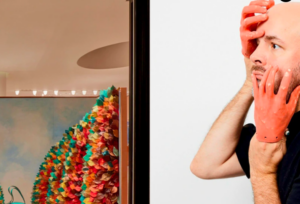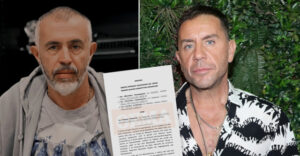Reflecting on his childhood, Jonathan Baldock remembers always being creative, with an innate love and imagination for crafting. “I was a very creative child who loved to paint, sew, and make things with my hands,” he says from his studio in an exclusive interview, recalling how he used to build fairy houses in the garden using anything he could find in nature, from acorns to sticks and mud. “I made doll clothes out of toilet paper, and I was very skilled with a needle from a young age, as my mother taught me to sew,” he explains. Although no one in his family had an artistic profession, his mother encouraged his creative inclinations.
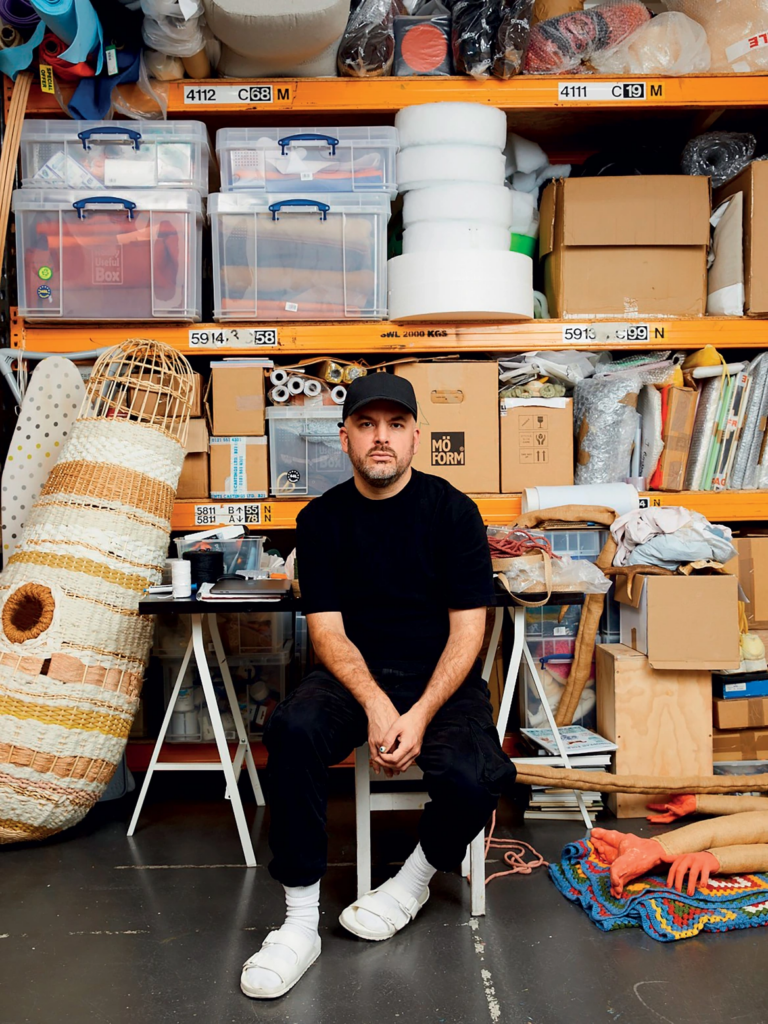
“Most people thought I would become a fashion designer,” he laughs. Gradually, with encouragement from his teachers, he decided to pursue art professionally and studied painting at the Academy of Fine Arts. However, he soon expanded into other mediums, such as textiles, ceramics, and glass. “These materials have a unique natural quality that draws the viewer in a very special way,” the artist notes.
The Hermès Experience
One of the pivotal moments in Baldock’s career was his first solo exhibition in a small gallery in London in 2007, where he presented a series of sculptures with “archaic” references. “I had no money at the time and made works from flour, salt, and water,” he explains, emphasizing that the ability to create without high financial cost was liberating for him. This opened doors to major collectors, like Charles Saatchi, and encouraged him to keep exploring new materials and forms.
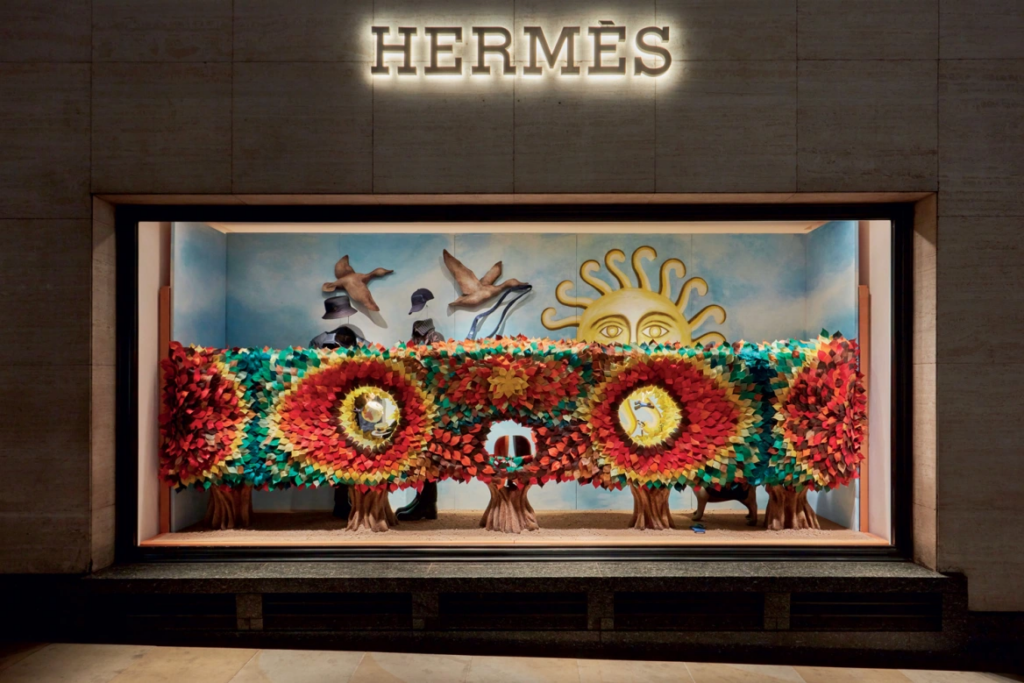
A significant step in his career was his first collaboration with Hermès in 2022 when he was asked to create a window display for their Tokyo store. “I don’t know how they discovered me, but I felt like it was the right moment,” he reveals.
Their partnership was rooted in shared values, such as an emphasis on craftsmanship and sustainability. “Hermès has a long tradition of craftsmanship. All of their products are made to last, and they do not contribute to fast fashion, which is very important to me,” he emphasizes.
A Magical Autumn at Hermès
Baldock’s second collaboration with the prestigious brand took place in September, this time for their London boutique. He envisioned a window display that would serve as a portal to a fantastical world. The installation, titled Take a Peek, depicts a Parisian garden with hundreds of autumn-colored leaves. “The keyhole is a recurring element in my works. It sparks curiosity and invites the viewer to look inside, creating an interaction between the body and the mind,” he explains. Baldock approached this collaboration as an opportunity to present his sculpture to a broader audience, beyond the confines of a gallery. “For me, sculpture is based on the physical presence of the viewer. There is always an element of performance, and that was my challenge for the London Hermès window: how can I engage passersby?” he says.
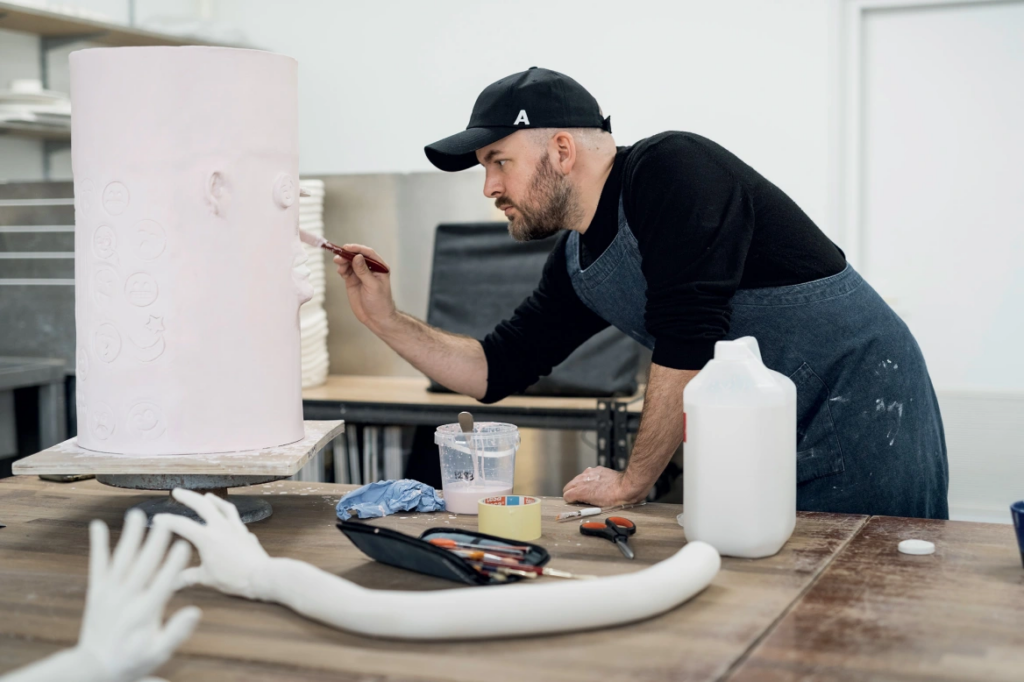
His display, which remained until November 1st, aimed to encourage people to stop, look, and interact with the exhibits, breaking the monotony of their daily stroll. In contrast to works displayed in an art space, creating a commercial store window requires a different approach. “I didn’t have the freedom I have in a gallery, as I had to consider the products and work within a limited space, visible only behind glass,” he explains. Despite the challenges, he managed to maintain his artistic authenticity. Even the leather leaves that decorated the window underscore his commitment to sustainability. “When the display is dismantled, these leaves will be turned into keychains,” he proudly adds.
As for the relationship between art and fashion, Baldock believes, “Fashion is a business that aims to sell products, which is not the artist’s job.” However, he acknowledges that collaborations with major brands offer funding opportunities. “The large-scale installations I create require many hours of work, and often there is no support for such projects,” he notes. What advice would he give to young artists? “First of all, don’t rush. Art requires time and dedication. Connections and networking are important, but what matters most is being kind to others. Kindness costs nothing and makes all the difference in the art world,” he says with confidence.
Ask me anything
Explore related questions
